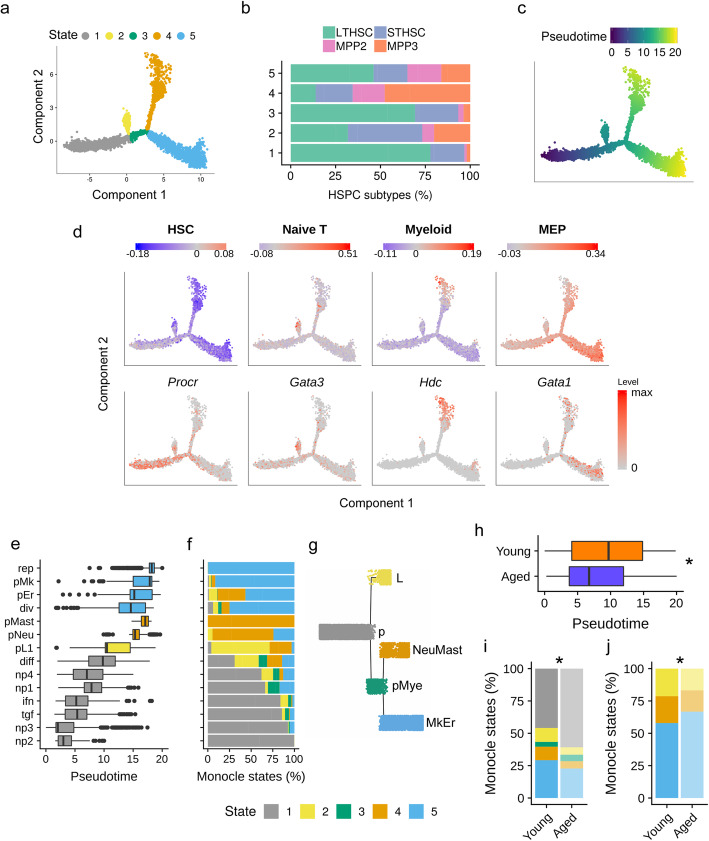Fig. 4.
HSPC differentiation trajectory revealed a clear split between L, MastNeu and MkEr primed cells. a Differentiation trajectory generated using Monocle 2 with all HSPCs excepted pL2 cells that were excluded. Cells are colored according to five states (1 gray, 2 yellow, 3 green, 4 orange and 5 blue), which partition the trajectory. b Barplots representing the LTHSC, STHSC, MPP2 and MPP3 proportions in the five states. c HSPC differentiation trajectory colored according to HSPC pseudotime values and representing their differentiation progression. d HSPC differentiation trajectories colored according to HSPC scores for hematopoietic lineage signatures retrieved from the literature (upper panel) and according to the expression level of HSPC differentiation markers (lower panel). For signatures, positive (red) or negative (blue) scores indicate whether the expression of the tested gene set is more or less important than an equivalent control gene set. Signatures identified are HSC, naïve T, Myeloid and MEP (Megakaryocyte Erythrocyte Progenitor). HSPC differentiation markers shown are: Procr for LTHSCs, Gata3 for lymphoid-primed HSPCs, Hdc for myeloid-primed HSPCs and Gata1 for erythrocyte-megakaryocyte-primed HSPCs. e Repartition of the Seurat clusters along the pseudotime. Box plots (medians) of pseudotime values are colored according to the most represented state. f Repartition (in percentage) of the different states (1 to 5) of the trajectory for each Seurat cluster. g Tree representation of HSC differentiation trajectory, edges representing the states (state 1 in gray, 2 yellow, 3 green, 4 orange, and 5 blue), and nodes standing for pseudotime points: the starting point (s), the first bifurcation point (p), the primed Myeloid bifurcation point (pMye); and the three fates Lymphocyte (L), Neutrophil/Mastocyte (NeuMast) and Megakaryocyte/Erythroid (MkEr). h Boxplot of pseudotime values for young and aged cells. * indicates a significant difference between young and aged pseudotime value distribution (median difference > 2.9, p value < 10−16 Wilcoxon rank sum test) i, j Percentage of Monocle states in young and aged conditions, when considering all states (i) or only states 2, 4, and 5 (j). * indicates a significant dependence between state and age repartitions (p value < 10−10 Pearson’s chi-squared test)

